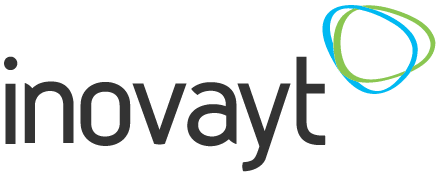
The concept of financial independence is gaining traction, with more people aiming to achieve it by the age of 40. Imagine having the freedom to choose whether to work or pursue your passions without a financial burden hanging over you. While reaching financial independence by 40 may sound ambitious, with the right strategies and support, it’s more achievable than you might think.
What is financial independence?
Financial independence is about having enough money from your savings and investments to cover your living expenses indefinitely. It means you can step away from your regular 9-to-5, knowing you’re secure. However, this requires a clear financial roadmap. Whether you’re already on your financial journey or just starting, here are some practical strategies to set you up for success.
Start early with financial goal-setting
When it comes to financial independence, the earlier you start, the better. Setting financial goals as soon as you begin earning clarifies what you need to achieve and gives you more time to reach your target. Time is your biggest asset.
Start by defining your short-term and long-term financial goals. Short-term goals might include building an emergency fund or paying off small debts, while long-term goals should focus on accumulating wealth through savings and investments. Make sure your goals are SMART—specific, measurable, achievable, relevant, and time-bound. This approach creates a clear roadmap, making it easier to stay on track.
For example, if you aim to save $250,000 by the time you turn 40, break it down into smaller annual targets. Starting early gives you the luxury of spreading these goals over many years, reducing the pressure and helping you maintain consistency.
Build a budget and stick to it
Budgeting is the backbone of any financial independence plan. It’s your tool to monitor where your money is going and helps you identify areas where you can save more. Without a budget, it’s easy to overspend and derail your long-term goals.
Several apps and tools simplify the budgeting process and help you track your spending in real-time. Start by categorising your expenses—housing, food, transport, entertainment, etc.—and allocating a portion of your income to each. Ensure you include savings and investments as a ‘non-negotiable’ expense in your budget. Treat them as essential as paying your rent or mortgage.
One effective trick is to automate your savings. Set up a standing order that moves a portion of your salary directly into a savings or investment account. This removes the temptation to spend and ensures that you’re saving consistently, even if you’re not actively thinking about it.
Not sure where to begin? Get started today with our free budget planner template.
Prioritise savings and investments
Savings are important, but they only take you so far. Investing is non-negotiable if you’re serious about achieving financial independence by 40. Investing allows you to harness the power of compound interest, where your earnings generate their own earnings over time. The earlier you start, the more significant the compounding effect will be.
Start by building a solid foundation of savings. Aim to have at least 3-6 months’ living expenses in an emergency fund. Once that’s in place, invest in a diversified portfolio of assets like stocks, bonds, and exchange-traded funds (ETFs). If you’re new to investing, consider starting with low-cost index funds or ETFs that offer broad market exposure with lower risk.
It’s important to understand your risk tolerance—how much risk you’re willing to take in pursuit of higher returns. In your 20s or 30s, you can generally afford to take on more risk as you have time to recover from market fluctuations. As you approach 40, you might want to shift towards safer investments to protect your accumulated wealth.
A good standard to adhere to is to invest consistently and avoid trying to time the market. Regularly investing small amounts—known as ‘dollar-cost averaging’—can smooth out the market's volatility and build wealth steadily over time.
Pay down debt aggressively
Debt is one of the most significant barriers to financial independence. If you have high-interest debt like credit cards or payday loans, it’s crucial to pay these off as quickly as possible. The interest you pay on these debts can easily make any returns you’re earning from savings or investments redundant.
To tackle debt efficiently, consider using either the snowball or avalanche method. The snowball method involves paying off your smallest debts first, giving you psychological wins that keep you motivated. On the other hand, the avalanche method focuses on paying off debts with the highest interest rates first, saving you more money in the long run.
Whichever method you choose, commit to paying more than the minimum monthly payment and avoid taking on any new debt unless necessary. Once you’re free of high-interest debt, you’ll be able to divert those payments toward your savings and investments, accelerating your path to financial independence.
Diversify income streams
Relying solely on a single salary can make it harder to achieve financial independence by the time you turn 40. Diversifying your income streams can help speed up the process. This could mean starting a side hustle, investing in property, or generating passive income through dividend-paying stocks.
Side hustles like freelancing, consulting, or selling products online can provide an immediate income boost. If managed well, these side incomes can grow significantly over time. Alternatively, passive income streams, like rental income or dividends, offer a more hands-off approach but typically require upfront investment.
Having multiple sources of income not only accelerates your savings but also provides financial security. If one income stream dries up, you still have others to fall back on, giving you peace of mind on your financial journey.
Regularly review and adjust your financial plan
Even the best financial plans need adjustments along the way. Life events—whether a promotion, marriage, children, or market downturns—will inevitably impact your financial situation. It’s important to review your goals regularly and adjust your strategy accordingly.
Set aside time each year to evaluate your financial progress. Have you met your savings and investment targets? Are there areas where you can improve?
Adjusting your plan doesn’t mean abandoning your goal of financial independence by 40. It simply means being flexible enough to adapt to changes while staying committed to your ultimate financial objectives.
How can Inovayt help me become financially independent by the time I’m 40?
Achieving financial independence by 40 may seem ambitious, but with the right strategies, it’s entirely within reach. By starting early, budgeting wisely, investing consistently, and paying down debt, you’ll be well on your way. Don’t forget to diversify your income streams and regularly review your plan to make sure you’re on the right track.
Financial independence isn’t about becoming wealthy overnight; it’s about building long-term stability and freedom. Start today, stay focused, and get in touch with the team at Inovayt to help make your dream a reality.

